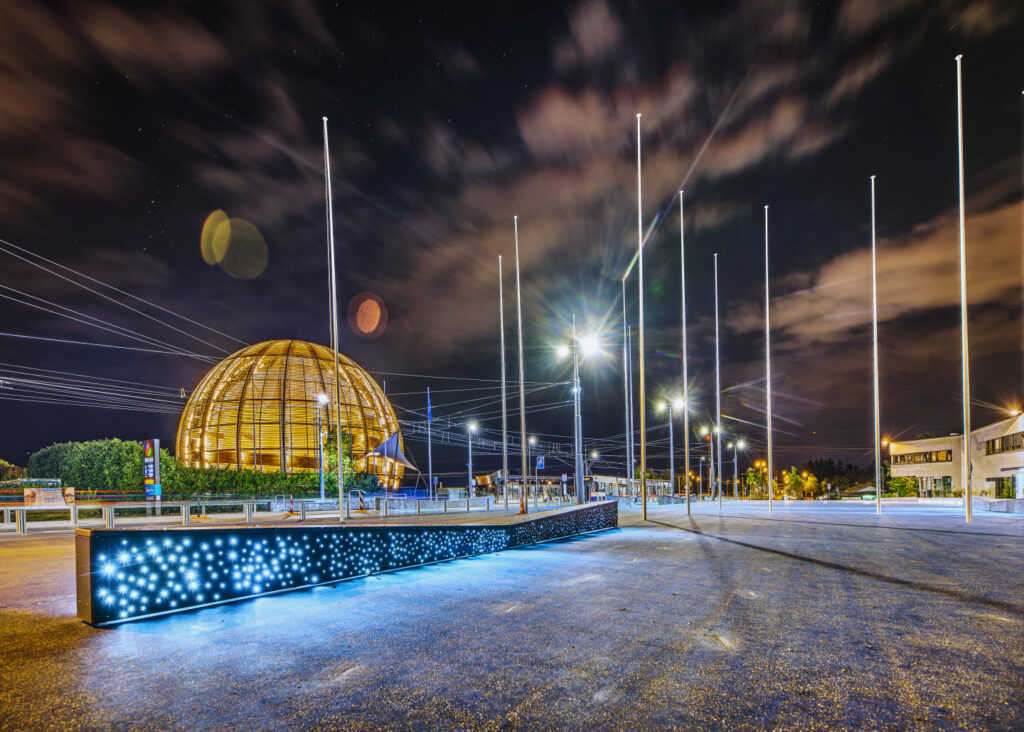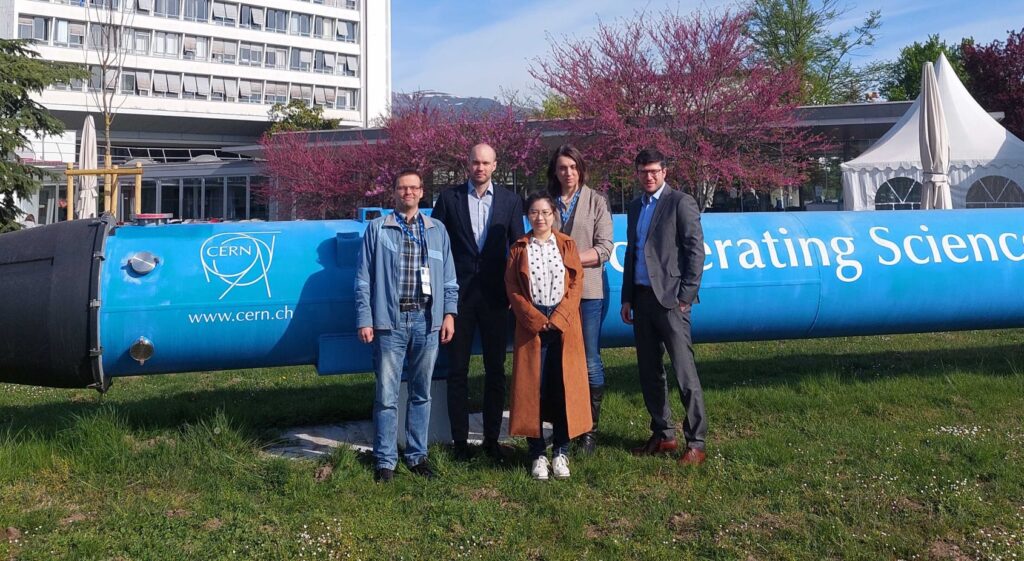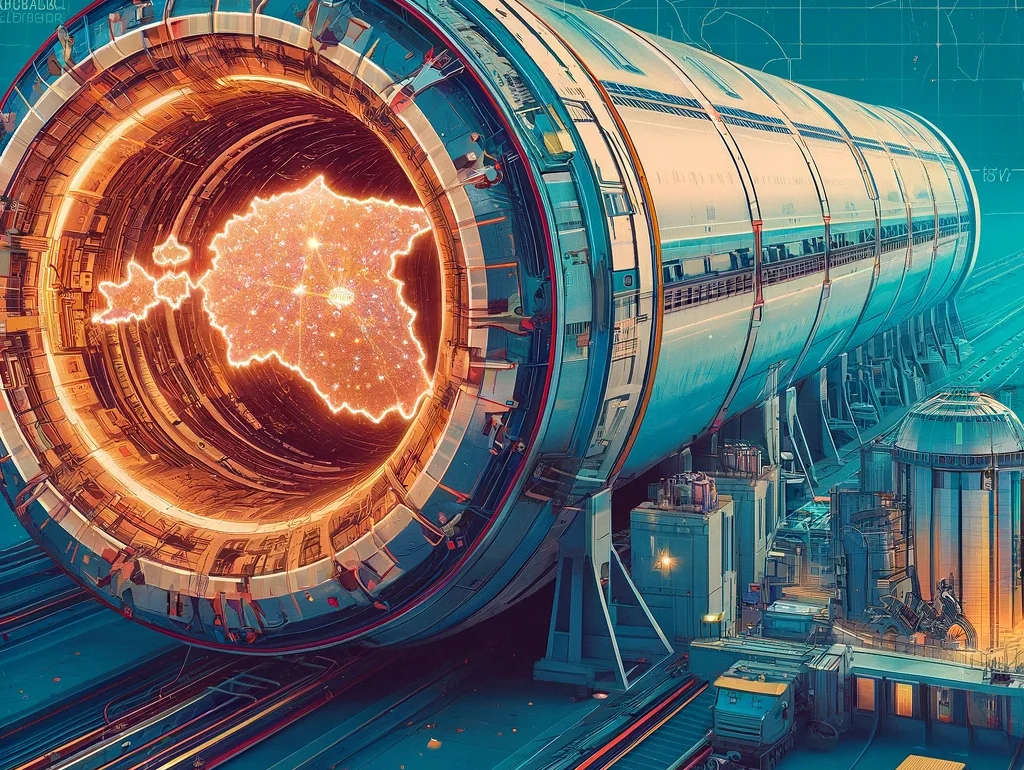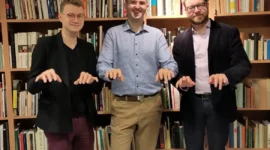Estonia will soon become the 24th full member of the European Organization for Nuclear Research (CERN), a development that will have far-reaching consequences for Estonian science. As a full member, Estonia will be represented at the CERN Council and have a presence of the organization’s finance and research policy committees. As such, Estonia will be involved in managing CERN, as well as decisions related to new programs and experiments.
These high-level changes will also trickle down to Estonian researchers who are interested in studying “the most important questions we have in our universe,” according to Veronika Zadin.
Zadin is a professor of materials technology at the University of Tartu and a representative of Estonia to the CERN Research Policy Committee. She also represents the University of Tartu in an CERN Science Consortium of Estonia that involves Tallinn University of Technology (TalTech) and the Estonian National Institute of Chemical Physics and Biophysics, or KBFI. Zadin said that Estonia’s membership will “echo everywhere” and have a “huge impact” on Estonian science.
CERN was established in 1954 and its laboratory is situated on the French-Swiss border in Meyrin, a Geneva suburb, on the Esplanade des Particules. The facility hosts the Large Hadron Collider, the world’s most powerful particle collider, as well as unparalleled computational resources, and has more than 2,500 fulltime staffers. CERN had 12 members at its founding, but its membership has grown to 23, including Estonia’s neighbor Finland, which joined in 1991.
Estonia has had a relationship with CERN since the mid-1990s, and became an associate member in 2021. Full membership is almost a done deal. At the end of March, CERN’s current membership voted to grant Estonia full membership, but the decision still rests in the hands of the Estonian parliament, who are expected to vote to accede to the organization in due time.

Zadin said she sees no reason why the Estonian shouldn’t vote in favor of joining. When asked about when it might happen, she said, “hopefully soon,” adding that it has “very strong support from the ministries.”
When Estonia becomes a full member, Estonian researchers will be able to fully participate in CERN research by joining the laboratory. “They can do their PhD studies in CERN” said Zadin, “Previously, getting a CERN-funded PhD was not possible. Now these young scientists can get full support from CERN to do their research.
“It significantly amplifies the opportunities for how they could do their research,” Zadin said.
The same goes for postdoctoral researchers and beyond, who can now compete for staff positions within CERN. As an associate member, Estonia could contribute money to CERN which would then be repaid to Estonian scientists in the form of salary, access, and industry contacts, for example.
Industry in particular benefited from this setup, and most of Estonia’s investments in CERN were paid out in the form of contracts to Estonian companies, mostly in the IT, electrical and rare metals businesses. Silmet, a rare earths processor based in Sillamäe in the northeast of Estonia was one such firm. As a major manufacturer of niobium, CERN had an interest in partnering with the company, as the magnets in its collider are made of niobium. “Estonia has been a potential source of this material for them,” remarked Zadin.
With full membership though, there are “no more limits” related to interactions with CERN, she underscored. “This is an opportunity for the best minds that Estonia has to offer,” Zadin noted. “They can participate fully in CERN actions, remain connected to Estonia, and give back to Estonian science, higher education, and the economy.”
This could have repercussions down the road, as CERN is a “huge generator of innovation,” Zadin stated. CERN scientists were involved in the creation of the world wide web, touchscreen technology, solar panels, email encryption, and positron emission tomography scans.

At the University of Tartu, several research groups stand to benefit, including Zadin’s, which is involved in CERN’s Future Circular Collider (FCC) study, an effort to create a particle accelerator with an energy significantly above that of previous circular colliders. “Collaboration with CERN is one of our key research activities,” she said. Other University of Tartu researchers have worked with CERN to study atmospheric physics (the CLOUD experiment), sensor technologies (the Crystal Clear Collaboration), and new tools for cancer radiation therapy, she added.
“The same technologies for the particle accelerators can be used for medical radiation,” commented Zadin.
The same opportunities await TalTech researchers. Tauno Otto is head of development of TalTech’s School of Engineering as well as program director of integrated engineering. He said that the school stands to benefit for the reasons cited by Zadin.
“For Estonian research it means a lot – as TalTech is doing research considering industry needs,” Otto said. According to Otto, following acceptance of a project, Estonian researchers will no longer face financial limits when participating in CERN experiments, and its companies can participate in larger procurements.
Research groups involved in smart manufacturing, power electronics, and computing hardware are already involved in different CERN experiments, and interest in CERN is growing among other researchers, Otto said.
“It also means that Estonian industry has increased possibilities for innovation, research and development towards accelerator technologies, related products, and services,” he added.
Zadin is the University of Tartu’s representative in the CERN Science Consortium of Estonia, Otto represents TalTech, and KBFI is represented by Martti Raidal, a senior researcher and group leader at the state institute who did his postdoc at CERN in 2001-2003.
Raidal noted that the joining of Estonia to CERN as a full member is a “sign of validation” and shows that Estonian research is on par with other CERN member countries. He also noted that joining the organization has been a complex process, as CERN as an international organization is managed much like a state and requires support from all other members. “It’s like joining the United Nations or something like that,” he said.
Estonian scientists have been collaborating with CERN for decades though, Raidal noted, and these existing collaborations will continue. “Science will function the same way as always,” he said. But to continue to do good science will require not only political will from the government, but continuous financial support.
“Estonia is becoming a member of CERN,” said Raidal, “and to become a member, one prerequisite is not only the existence of CERN science in Estonia, but also financing.”
At KBFI, Raidal will look to continue the institute’s physics research, with its focus on Dark Matter and the Higgs Boson, both of which will rely on access to CERN’s large hadron and linear colliders.
Author of this article is Justin Petrone. This article was funded by the European Regional Development Fund through Estonian Research Council.
 Back
Back



